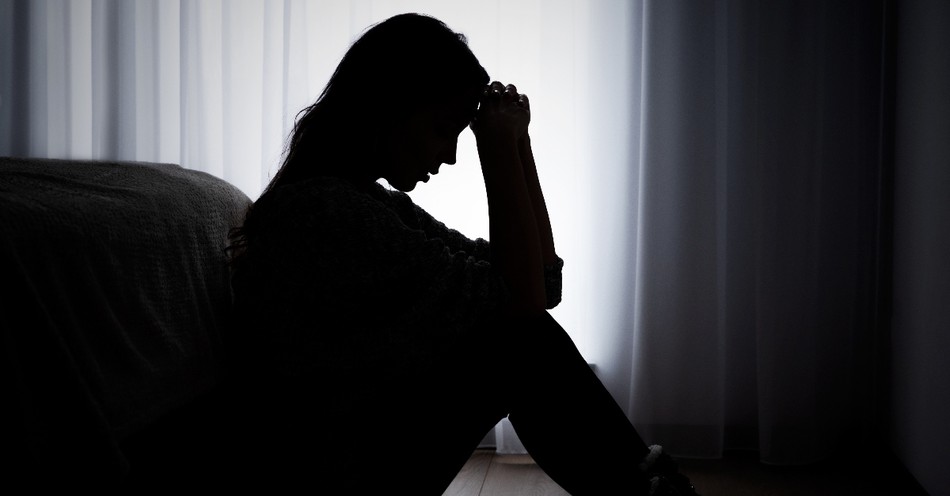We all know the future can sometimes feel scary. There is so much to fear in this world. But the Bible teaches that those who are in Jesus, followers of Christ, do not need to live in fear of the future because of two things:
- One day Jesus will return and make all wrongs right.
- One day Jesus will return and make all things new.
When you are in the midst of trauma, tragedy, or major life transition, it can be difficult to cling to those promises of Jesus’s return. But facing life’s difficulties by trusting the promise of God’s judgment and God’s new creation, well, it is the difference between a life of freedom and a life of fear.
In 2 Thessalonians, the apostle Paul wrote to a church afraid of the future. There had been some misconceptions and rumors going around, and they were told that Jesus had already returned and left them. The Thessalonians were living in total fear because they thought Jesus had forgotten them, leaving them to be persecuted without any help.
We have all felt, at times, that God doesn’t see us or has forgotten us. If you have experienced that, you know a bit of what the Thessalonians were struggling with.
The rumors Jesus had already come and gone were just that- rumors. Paul wrote at least two letters to this church to correct the misconception and remind them the return of Jesus should never inspire fear but bring hope and confidence.
As Paul wrote to encourage them, he noted two things in 2 Thessalonians 1:3-6. In their suffering:
- The church’s faith was growing more and more.
- The love they had for each other was increasing.
Their faith and love were growing more abundant amid sorrow, devastation, loss, and fear. And according to Paul, all of this is evidence that God is just and they are worthy of entering the kingdom of God.
It’s interesting that in the midst of horrific persecution and suffering, they weren’t doubting their faith or walking away from the church. They were not increasing in fear but rather growing deeper in faith and love. In other words, they were not just surviving, they were thriving in sorrow—and somehow that proved God’s justice.
What that means is there is some connection between our response to suffering as followers of Jesus, which acts as evidence that God is good and fair.
So often, when faced with grief, pain, or stress, we panic instead of getting on our knees to pray, worship, or dive deeper into our faith. Panic gives way to worry, fear, and wonder about where in the world God is.
Fear can tempt us to leave our church community, dismantling our faith. It can squelch our desire to read the Bible and serve our neighbors. Scripture tells us it doesn’t have to be that way. In fact, if when we remain faithful in our seasons of suffering, we grow in spiritual maturity. Our steadfastness in suffering results in greater faith in God and deeper love for others.
What we must understand is that spiritual growth in suffering is not a matter of course. Walking through suffering, difficulty, pain, loss, or hardship won’t “automatically” result in a deepening faith and a deepening love for the people around us. The “result” is both a gift of grace from God and a choice that we make to contend for our faith in Jesus.
Decide, ‘I will not be moved. I will stay faithful to Jesus even when everything in me wants to give up on God – ‘this is the kind of steadfast endurance that results in a deepening faith and love for others.
This is the invitation we have as Christians and what it means to be a people of faith: it is to say, ‘I am hurting, I am suffering, I am afraid of the future, my spiritual wells are bone dry, God has disappointed me. And yet I will keep on choosing faith and fidelity to King Jesus.’
The above mindset is how our steadfastness in suffering results in greater faith in God and deeper love for others - because Jesus is steadfast, unchanging, and he is available to help and strengthen us.
What does it mean to be steadfast? This is an old English word related to a sword’s power to sustain blows (without breaking), or being unshakeable, unfaltering, obstinate, and stubborn. It also describes the firmly fixed and unwavering power of a plant or tree to endure hard seasons of weather.
In fact, if you have ever seen a picture of a Mighty Sequoia tree, that is a great example of steadfastness. The root system of a sequoia is a source of never-ending surprise. The roots extend out from the trunk in every direction for a hundred feet or more, and they are often very close to the surface of the ground. The giant sequoia develops no permanent taproot, but its roots are entangled with other sequoia roots- sometimes for miles and miles.
To be steadfast in suffering is to stand arm in arm with fellow believers, borrow the faith of our community, refuse to remain isolated and alone, and choose to help carry each other so that when the winds blow, the others are there to support and uphold the group. That’s how our faith and our love will increase in hardship. Our Sequoia-like steadfastness in suffering is a way we participate in God’s Kingdom.
Where do we start? By acknowledging our fears and frustrations to Jesus. Just be honest with God, saying,
“I’m afraid, Jesus...
God, I am mad about this loss...
God, I am apathetic. I don’t even feel afraid. I don’t even care... I used to care more, but I have lost my excitement for life...
God, I am heartbroken, heartbroken, heartbroken. God, I am angry.
God, when I think about this aspect of my future, my kids, my marriage, my career, my loneliness, my stress, - I am scared...
Jesus, I want to follow you for the first time- I want to begin my life with you today...
Or, God, I don’t even believe this stuff...
When we begin to honestly acknowledge our fears and frustrations about the future, Jesus will meet us there, and that acknowledgment is part of developing sequoia steadfastness in suffering.
Photo Credit: ©iStock/Getty Images Plus/simpson33



_639003522088907085.jpg)
